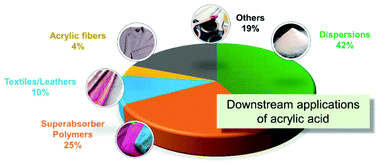Interfacial catalysts for sustainable chemistry: advances on atom and energy efficient glycerol conversion to acrylic acid
Abstract
Conversion of glycerol to acrylic acid represents an emerging application in transforming waste biomass to valuable products in chemical industry. However, achieving almost perfect atomic efficiency and intrinsic zero-waste generation still remain a grand challenge to meet stricter regulations on energy consumption. Interfacial catalysis plays a central role in bridging nanostructured catalysts with green chemistry. Despite a few preliminary attempts in academia and industry, the application of interfacial catalysts remains limitedly successful. In this review, we first describe morphological & electronic uniqueness of three important interfacial catalysts, (I) bimetallic nanoclusters, (II) metal–acid composites and (III) Brønsted/Lewis acid hybrids. The resulting catalytic properties for C–H and C–O bond cleavage during oxidation and dehydration of glycerol to acrylic acid will then be critically discussed, to reveal the key advances and challenges in this area. As oxidation and dehydration represent two important reactions in industry, the outcome of this work is to provide insightful information developing cost-effective catalytic materials for various other sustainable chemical applications.

- This article is part of the themed collection: Green Chemistry Reviews


 Please wait while we load your content...
Please wait while we load your content...